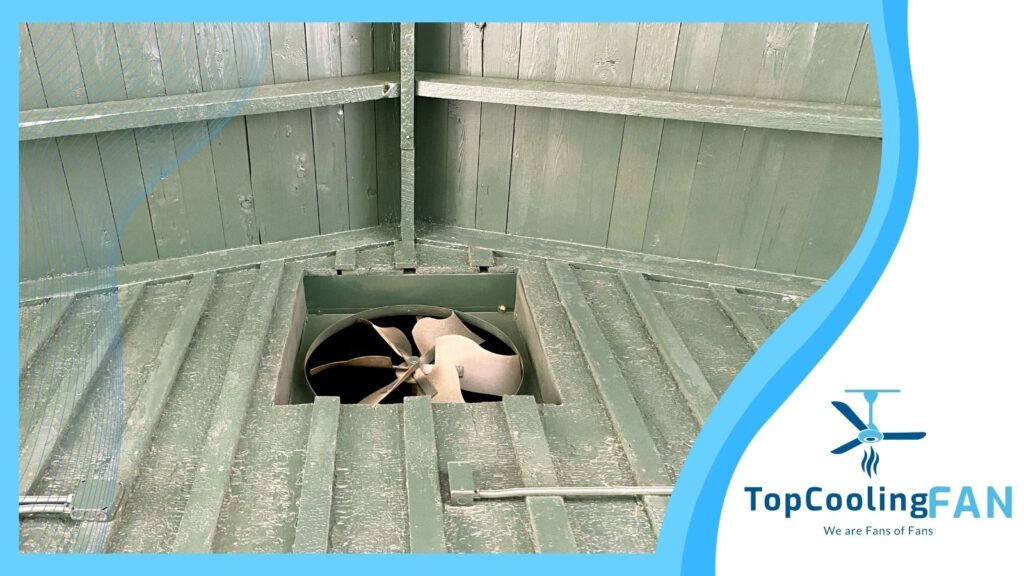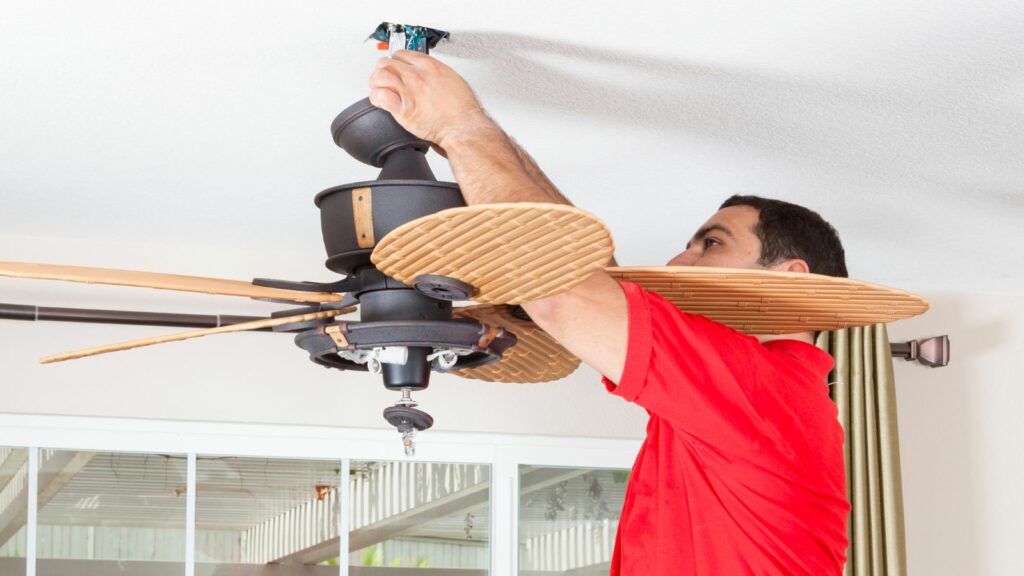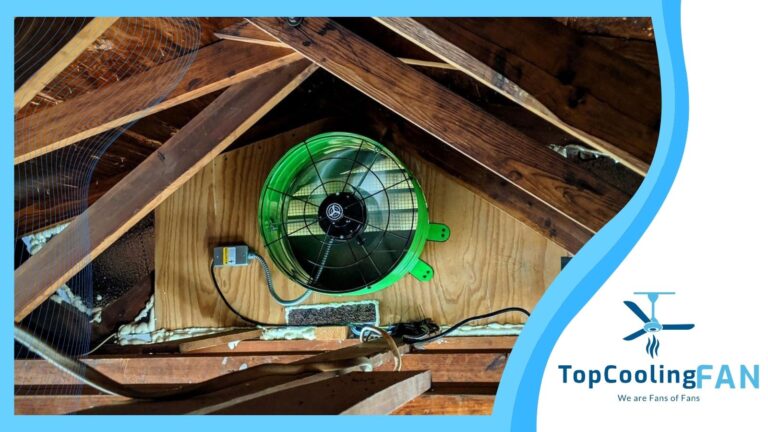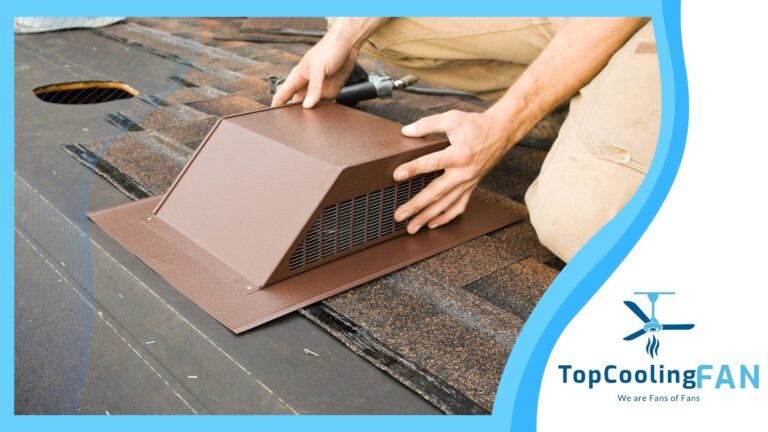Attic Fan 101: Your Guide to Cooling Your Home Efficiently
An attic fan is a staple in smart home improvement strategies and a critical component for maintaining a comfortable living space throughout the hotter periods of the year.
For homeowners seeking to enhance their climate control measures and reduce overall energy consumption, integrating an attic fan offers a significant benefit.
Positioned within the attic itself, these fans work diligently to expel hot air, leading to a more temperate and enjoyable home environment.

Understanding the mechanics of attic fans is the first step to appreciating their value.
The attic fan’s primary role is to regulate the heat level in the attic by pushing out hot air and allowing cooler air to be drawn in through vents.
This not only helps to lower temperatures in the attic but also assists in maintaining cooler temperatures in the living quarters below.
Consequently, there is less strain on air conditioning systems and a potential for reduced energy costs.
For homeowners keen on home improvement, the integration of an attic fan is a decision that positively affects both comfort and energy efficiency.
The fan’s operation can vary depending on the type, whether it’s solar-powered, electric, or passive.
Each model comes with its unique set of features designed to cater to different home requirements and preferences.
By mastering the basics of how attic fans operate and the benefits they bring, homeowners can make informed decisions to optimize their home’s environmental control settings.
Understanding Attic Ventilation
Proper attic ventilation is crucial for maintaining a healthy and efficient home. It involves balancing intake vents and exhaust vents to ensure a continuous flow of fresh air.
Importance of Ventilation
Attic ventilation is essential to regulate temperature and humidity levels in the space under your roof.
Inadequate ventilation can lead to a multitude of problems, including mold growth, wood rot, and a decreased lifespan of roof shingles.
The stack effect, a natural principle of convection, drives warm air up and out the attic, while pulling cooler, fresh air from outside through intake vents.
This air exchange is vital for removing excess moisture and mitigating temperature extremes, which not only protects the structural integrity of your home but also can help reduce energy costs.
Ventilation Mechanisms
The attic’s ventilation system typically combines several types of vents to maintain a proper airflow.
Intake vents are strategically placed at the lowest part of the roof, often in the soffit, to allow cool air to enter.
Exhaust vents are located at or near the peak of the roof, such as a ridge vent, to let out the hot, moist air.
Other ventilation options include:
- Gable vents: Installed on the exterior wall at the attic’s peak, allowing for cross-ventilation.
- Baffles: Ensure that the insulation does not block soffit vents and helps maintain clear air pathways.
- Turbine vents: Use wind to pull air out of the attic, spinning even in light breezes to create suction.
- Static vents: Require no power and maintain steady airflow thanks to their design.
For active ventilation, powered vents can be used, which require energy to run but can be very effective, especially when equipped with thermostats and hydrostats to activate based on specific temperature or humidity levels.
To prevent problems like ice damming, which can occur when heat escapes from a poorly ventilated attic, it’s critical to have a well-designed ventilation system.
This system ensures that the attic maintains a temperature close to that of the outdoor air, reducing the likelihood of snow melting and refreezing at the roof’s edge.
Types of Attic Fans
Attic fans are crucial for maintaining a well-ventilated and cool attic space, which can help reduce air conditioning costs and improve the overall efficiency of a home’s cooling system.

Powered Attic Fans
Powered attic fans, also known as electric attic fans, use electricity to drive an exhaust fan that expels hot air from the attic.
These fans often come with thermostats to control their operation, turning on when the attic reaches a certain temperature.
By removing hot air, they can help lower the temperature of living spaces below, which in turn may decrease reliance on air conditioning.
Solar Powered Fans
Solar powered fans are an eco-friendly option that harness green energy from the sun.
They operate without the use of grid-based electricity, making them an Energy Star-compliant choice for homeowners looking to minimize their environmental footprint.
Solar fans provide similar benefits to powered attic fans by expelling hot air, but often with even lower cooling costs since they consume no electrical power from the service provider.
Whole House Fans
Whole House Fans are designed to pull cooler air from outside into the living spaces and push the hot, stale conditioned air out through the attic vents.
They are typically installed in the ceiling between the attic and the home and work best in the evenings when outside air is cooler.
Whole House fans can be a more cost-effective solution to cool down a house without the extended use of air conditioning systems.
Benefits of Attic Fans
Attic fans are instrumental in maintaining a comfortable temperature within the attic space. They work by circulating air, effectively reducing the extreme heat that can build up under a roof during hot summer days.
As they pull in cooler outside air and expel hot air, attic fans help keep attic temperatures closer to those found outdoors. This contributes to an overall cooler home environment, enhancing comfort levels and potentially reducing the need for air conditioning.
In areas with high humidity, attic fans play a key role in reducing moisture accumulation within the attic.
Moisture is a primary contributor to mold growth and wood rot, which can compromise the structural integrity of a home.
By improving air circulation, attic fans help to prevent these issues, preserving the condition of the home’s construction materials.
The prevention of ice dams in colder climates is another benefit of attic fans.
Ice dams occur when heat from the attic melts snow on the roof, which refreezes at the eaves, leading to the accumulation of ice.
This can cause water to back up and seep into the home, resulting in water damage.
A well-ventilated attic, made possible by attic fans, reduces the temperature variation on the roof, preventing ice dam formation.
Attic fans contribute to energy efficiency.
By aiding in temperature regulation, these fans reduce the workload on home heating and cooling systems, which can lead to lower energy consumption and cost savings.
Lastly, attic fans can help in the extension of roof life.
Heat and moisture can deteriorate roofing materials over time. By mitigating these factors, attic fans can extend the lifespan of the roof, saving homeowners from frequent and costly repairs or replacements.
Installing an Attic Fan

Proper attic fan installation is crucial for efficient air circulation and adherence to safety standards. It entails choosing the right size, understanding installation best practices, and applying DIY tips if one has adequate home improvement skills.
Choosing the Right Size
When selecting an attic fan, one must consider the size of the attic in square feet.
As a rule of thumb, the fan’s capacity should be rated at a minimum of 0.7 cubic feet per minute (CFM) for each square foot of attic space.
This means a 1,500 square-foot attic requires at least a 1,050 CFM unit.
Proper sizing ensures that the attic fan can provide adequate air circulation as per the standards set by the International Residential Code.
Installation Best Practices
Installation best practices dictate that the attic fan be placed strategically between the rafters and away from any obstructions.
Safety standards should be a top priority, with all electrical connections conforming to code and secured properly.
Professional installation is recommended to ensure the attic fan is installed correctly and efficiently.
One should ensure that the installation:
- Does not compromise the integrity of the roofing.
- Makes use of existing gable vents if possible.
- Is sealed well to prevent leaks.
- Aligns with safety standards for electrical wiring.
DIY Installation Tips
For homeowners with good home improvement skills, a DIY attic fan installation can be a rewarding project.
It’s important to have a comprehensive installation guide and ensure that all safety standards are met, especially concerning electrical setup.
When installing:
- Confirm that the power is turned off at the circuit breaker before beginning.
- Use caution when working near rafters to prevent damage.
- It’s recommended to guard against potential roof leaks by installing the fan with proper flashing and sealant.
- Always double-check measurements and alignment for optimal functionality and to prevent future issues.
Attic Fan Maintenance

Routine checks are a cornerstone of attic fan maintenance. Homeowners should inspect their attic fans periodically. Ideally, they should do this twice a year to ensure everything is in working order. Signs of wear or damage should be addressed promptly to maintain optimal performance.
When it comes to cleaning vents, it’s important to remove any debris or dust build-up that could impede airflow. The vents should be kept clear to enable the attic fan to function efficiently. Cleaning the fan blades at least once a year will also contribute to a fan’s longevity and help it run more quietly and smoothly.
Servicing the attic fan can sometimes require professional help, especially when dealing with electrical or mechanical issues. However, simple tasks such as lubricating the fan motor with a few drops of light oil every few years can be done by the homeowner. This minor step can prevent larger issues and extend the lifespan of the attic fan.
Seasonal Considerations
Managing attic ventilation effectively requires adjusting practices according to the time of year. It’s crucial to optimize for temperature changes to prevent mold and ice dams while maintaining efficient energy use.

Summer Usage
During summer, hot air rises in the home and can get trapped in the attic, causing temperatures to soar. Utilizing an attic fan helps in exhausting hot air outside, and allows cooler air from the eaves to circulate. According to the information from Rollex, incorporating under-eave vents facilitates this process and improves seasonal performance.
Winter Challenges
Winter brings a set of concerns such as ice dams and humidity, which can damage the home if left unchecked. Adequate attic insulation and venting at the eaves are essential to prevent these issues. Vents enable the exchange of air, which helps to maintain consistent temperatures and ward off moisture build-up. Top Cooling Fan explains the importance of also running an attic fan in winter to aid in regulating the attic’s climate.
Additional Ventilation Solutions

When considering attic ventilation, one must evaluate various methods, ensuring they function effectively within an overall ventilation strategy. These methods range from natural, passive options to specific solutions that cater to unique roof designs.
Passive Ventilation
Passive ventilation relies on the natural airflow through the attic without the use of mechanical systems. It’s a complementary method within the overall ventilation strategy that often includes soffit venting. Properly installed, passive ventilation systems allow air to enter through soffit vents positioned low on the roofline and exit near the roof peak, often through ridge vents or gable vents, promoting continuous air circulation.
Rafter and Soffit Vents
For proper soffit venting, it’s important to use insulation baffles. These are installed where the attic floor meets the roofline to ensure that the soffit vents remain unblocked by insulation. Rafter vents serve to keep the pathway clear from the soffits to the attic’s upper areas, maintaining the flow of air necessary for a vented attic.
Ventilation for Special Situations
Some homes have unique roof designs that may not accommodate standard ventilation solutions. In these cases, alternative solutions may be required.
For example, powered attic fans or custom vent structures can be used. It’s critical to tailor the ventilation strategy to the specific needs of the structure. This ensures that a complementary system is provided. This system promotes energy efficiency and moisture control.


